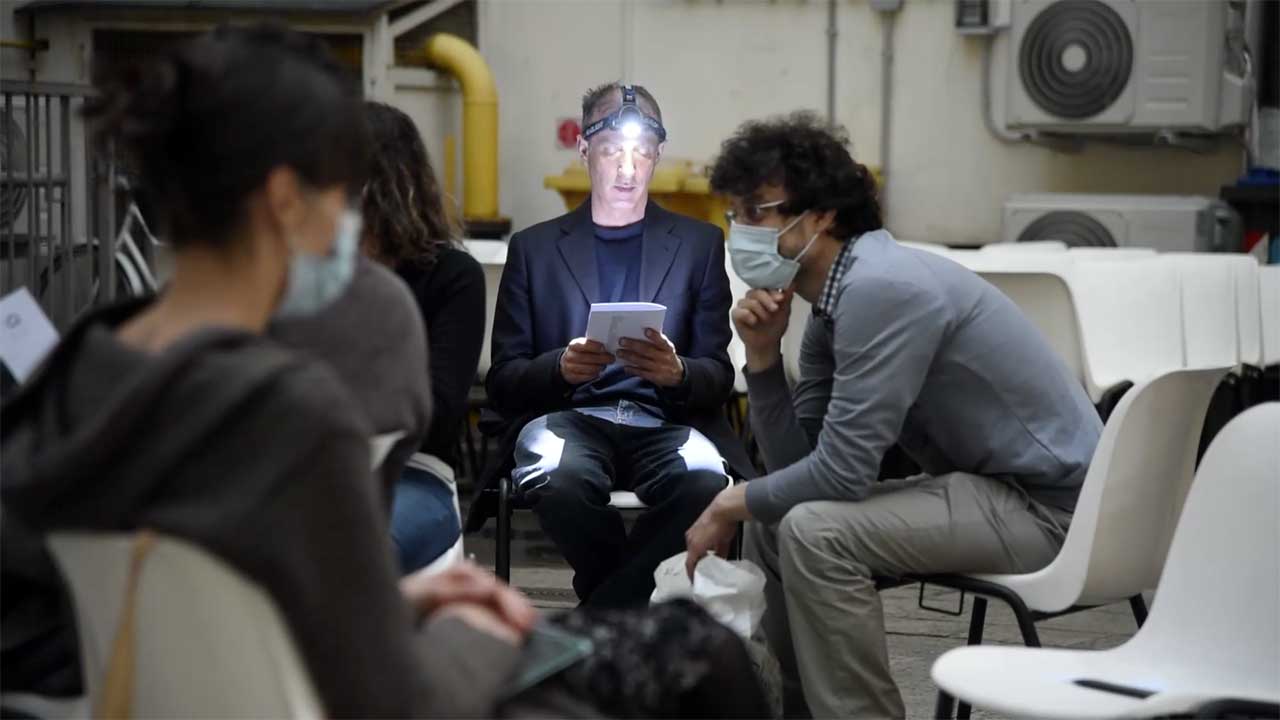Performance
Variable duration
With the participation of Fé Avouglan, Giacomo De Albertis, Carlo Reposo, Elena Ruzza, Giuseppe Verdino and Emanuela Ascari.
In 1968, during the Apollo 8 mission, Earthrise, the first space image of the Earth, was taken from a distance of 30,000 km. That image has now become portable and explorable in real time, thanks to the constantly growing number of satellites that constantly photograph the planet and to which we are constantly connected. Following the first Sputnik (launched in 1957), there are today 3372 artificial satellites orbiting the Earth (this figure refers to the performance date, while they are currently more than 4085). We are surrounded.
We have invented ingenious tools for seeing, recording, and calculating, and we have sent them watching us from space like prostheses extending from Earth. Invisible to the naked eye, disguised as luminous bodies moving in the night sky, they see everything. Deployed in constellations and aiming to the whole coverage of the planet, the activity of these satellites supports not only our spatial orientation, but also our communication, exchange of data, weather forecast, and scientific research. Not to mention the military, surveillance, and control purposes. A constantly expanding archive of images, data, and information is therefore being created, providing us with once unimaginable opportunities to comprehend the world we live in as well as our image, boosting the ancient Man’s mania of domination, but also awakening new environmental awareness. Satellite vision allows us to observe Earth from countless distant points of view that are orbiting it.
Though, in order to do this, we are eroding the earth’s crust, from which we obtain the materials to build them, and we are consuming a gargantuan amount of energy messing up the ecosystem balance. We build machines to watch our self-destruction from space: deforestation, the growth of mines, fires, climate change… From this perspective what we are leaving to the following generations, is the digital archive of a dying planet, in terms of matter, biodiversity, livelihood. It is a system of control and surveillance to be dealt with, in spite of new possibilities for our sight, knowledge, and image.
The existence of these tools that see, listen, and file is almost unknown to us. This performance consists of reading aloud the list of the names of these satellites. Language is the instrument for Man to know, and the act of mentioning the satellites sets us before their existence: it is a way of becoming aware of them, knowing that they exist and being able to talk about them, the first step towards our self-defence against them.
The list of the official names of the orbiting satellites comes from the UCS (Union of Concerned Scientists) Satellite Database, updated January 1st 2021: https://www.ucsusa.org/resources/satellite-database.
Throughout the next decade thousands of satellites will be launched and will orbit the Earth mainly for commercial, communicational, and control purposes.
Thanks to Prof. Emanuele Pensavalle for advice.
Produced for the Archivisssima Festival, 2021, Turin, Italy.
Photo credits Archivissima.



